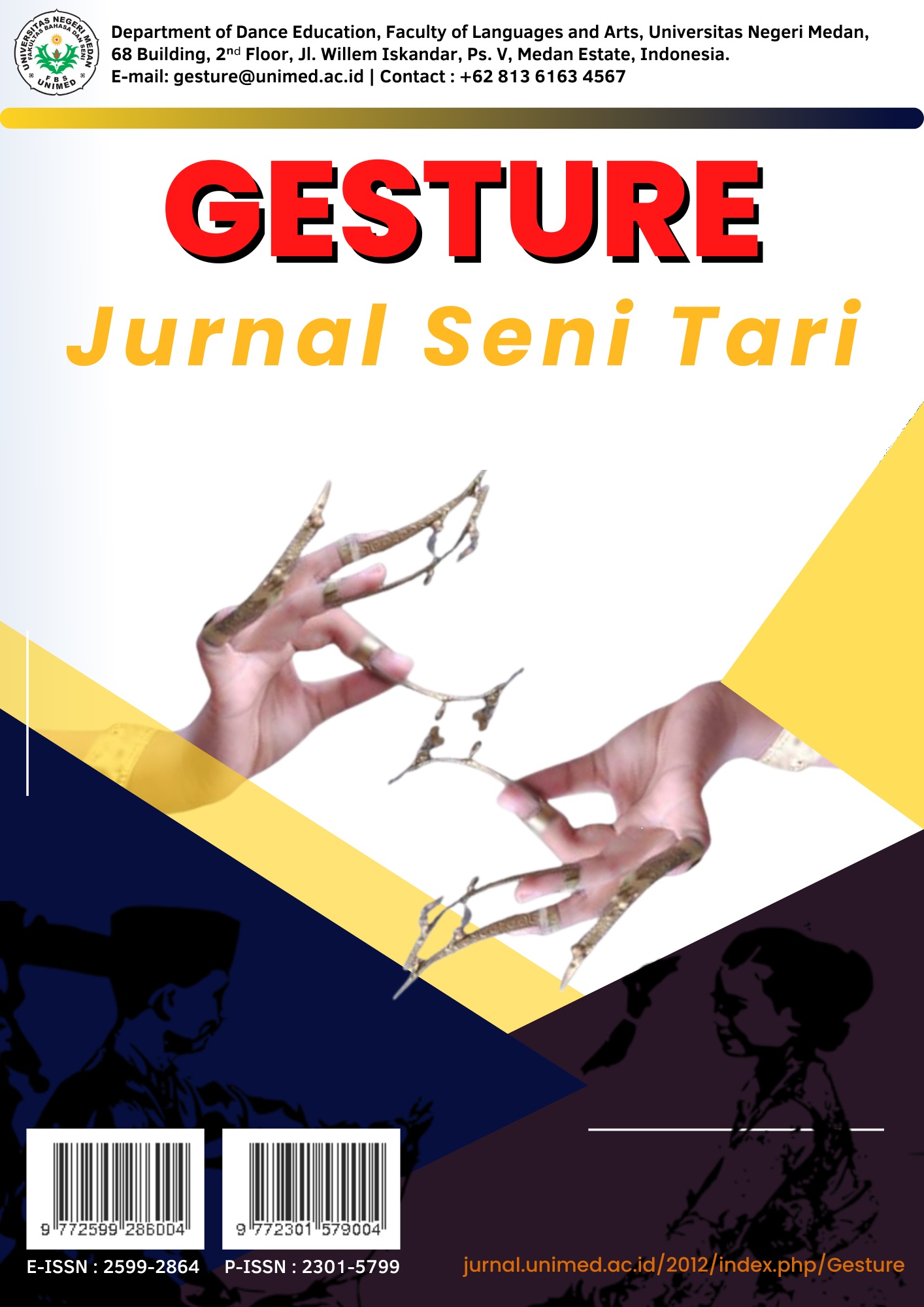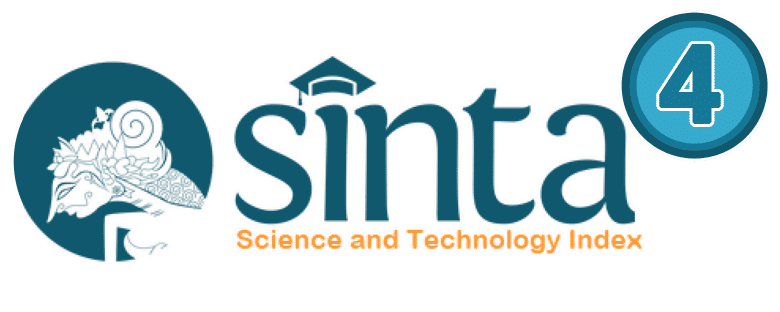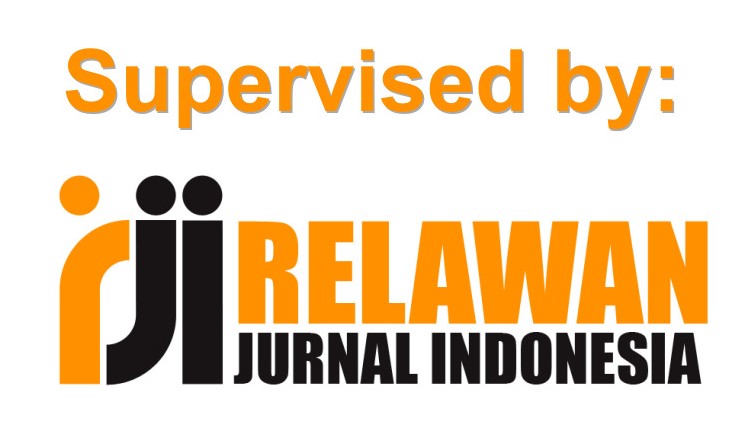Sejarah Perkembangan Reog Sepuh di Paguyuban Singo Gaplok Kabupaten Ponorogo
DOI:
https://doi.org/10.24114/gjst.v14i2.67907Abstract
This research examines the development of Reog Sepuh in Bedingin Village, Sambit District, Ponorogo Regency as a form of cultural heritage that has evolved within the dynamics of social changes. The research focuses on the transformation of performance structure, philosophical values, and preservation efforts carried out by its supporting community. This research employs a qualitative approach with ethnographic methods, participatory observation, in-depth interviews, and document study. The results show that Reog Sepuh Bedingin has uniqueness in terms of performance structure, movement patterns, and ritual functions that are still maintained to this day. Despite facing the challenges of modernization and shifting interests of the younger generation, Reog Sepuh Bedingin persists through regeneration efforts, creative innovations that still respect traditional standards, and support from local government and community. This research emphasizes the importance of balance between preserving authentic values and contextual adaptation to ensure the sustainability of traditional arts in the modern era.References
Achmadi, A. (2018). Pasang Surut Dominasi Islam terhadap Kesenian Reog Ponorogo. Jurnal Analisis, 12(1), 15-32. https://doi.org/10.24042/ajsk.v13i1.644
Endraswara, S. (2017). Metodologi Penelitian Kebudayaan. Yogyakarta: Gadjah Mada University Press.
Hadi, Y. S. (2017). Koreografi: Bentuk-Teknik-Isi. Yogyakarta: Cipta Media.
Hasanah, H. (2016). Teknik-teknik observasi (sebuah alternatif metode pengumpulan data kualitatif ilmu-ilmu sosial). At-taqaddum, 8(1), 21-46. https://doi.org/10.21580/at.v8i1.1163
Hutaminingtiyas, W., Widiatmoko, S., & Budianto, A. (2023). Sejarah Tari Reog Kendang Tulungagung Sebagai Kearifan Lokal. PINUS: Jurnal Penelitian Inovasi Pembelajaran, 9(1), 10-20. https://doi.org/10.29407/pn.v9i1.19655
Karim, A. (2014). Sejarah perkembangan ilmu pengetahuan. Fikrah, 2(2), 273-289. https://media.neliti.com/media/publications/61520-ID-sejarah-perkembangan-ilmu-pengetahuan.pdf
Kencanasari, L. S. (2009). Warok Dalam Sejarah Kesenian Reog Ponorogo (Perspektif Eksistensialisme). Jurnal Filsafat, 19(2), 179-198. https://doi.org/10.22146/jf.3446
Lisbijanto, H. (2017). Reog Ponorogo. Yogyakarta: Graha Ilmu.
Miles, M. B., Huberman, A. M., & Saldaña, J. (2014). Qualitative Data Analysis: A Methods Sourcebook (3rd ed.). Thousand Oaks, CA: Sage Publications.
Mujiono, Haris. (2020). Perkembangan Reog Bulkiyo di Desa Kemloko Kecamatan Ngeglok Kabupaten Blitar Kajian Teks dan Konteks. Yogyakarta : Institut Seni Indonesia Yogyakarta.
Nashrulloh, Hasani. (2025). Analisis Lunturnya Tradisi Reog pada Kalangan Generasi Muda Di Desa Giri Purno Kecamatan Rimbo Ilir Kabupaten Tebo. Jambi : Universitas Jambi.
Pranata, Andi. (2020). Bentuk dan Garap Reyog Sepuh di Desa Bedingin Kecamatan Sambit Kabupaten Ponorogo. Surakarta : ISI Press.
Rachmawati, I. N. (2007). Pengumpulan data dalam penelitian kualitatif: wawancara. Jurnal Keperawatan Indonesia, 11(1), 35-40. https://doi.org/10.7454/jki.v11i1.184
SAR, A. S., Samudra, G., & Atmojo, W. T. (2025). Analisis Perkembangan Bahan Inovatif Atribut Reog Ponorogo Mempengaruhi Nilai Ekonomi. Jurnal Pengembangan dan Penelitian Pendidikan, 7(2), 90-104. https://journalversa.com/s/index.php/jppp/article/view/1157
Sari, M. P., Wijaya, A. K., Hidayatullah, B., Sirodj, R. A., & Afgani, M. W. (2023). Penggunaan metode etnografi dalam penelitian sosial. Jurnal Pendidikan Sains dan Komputer, 3(01), 84-90. https://doi.org/10.47709/jpsk.v3i01.1956
Simatupang, L. (2013). Pergelaran: Sebuah Mozaik Penelitian Seni-Budaya. Yogyakarta: Jalasutra.
Wulansari, D. (2018). Eksistensi Reog Sepuh di Era Modern: Studi Kasus di Kabupaten Ponorogo. Jurnal Humaniora, 22(2), 145-157. https://digilib.uns.ac.id/dokumen/download/25341/NTM4NTM=/Eksistensi-Reog-Ponorogo-pada-Masyarakat-Desa-Sumoroto-abstrak.pdf
Downloads
Published
Issue
Section
License
Copyright (c) 2025 Sendi Iman Apriyanto, Anggono Kusumo Wibowo

This work is licensed under a Creative Commons Attribution-ShareAlike 4.0 International License.
Authors published with the Gesture: Jurnal Seni Tari agree to the following terms:
- Authors retain copyright and grant the journal the right of first publication with the work simultaneously licensed under a Creative Commons Attribution License (CC BY-SA 4.0) that allows others to share the work with an acknowledgment of the work's authorship and initial publication in this journal.
- Authors are able to enter into separate, additional contractual arrangements for the non-exclusive distribution of the journal's published version of the work (e.g., post it to an institutional repository or publish it in a book), with an acknowledgment of its initial publication in this journal.
- Authors are permitted and encouraged to post their work online (e.g., in institutional repositories or on their website) prior to and during the submission process, as it can lead to productive exchanges, as well as earlier and greater citation of published work. (See The Effect of Open Access)








